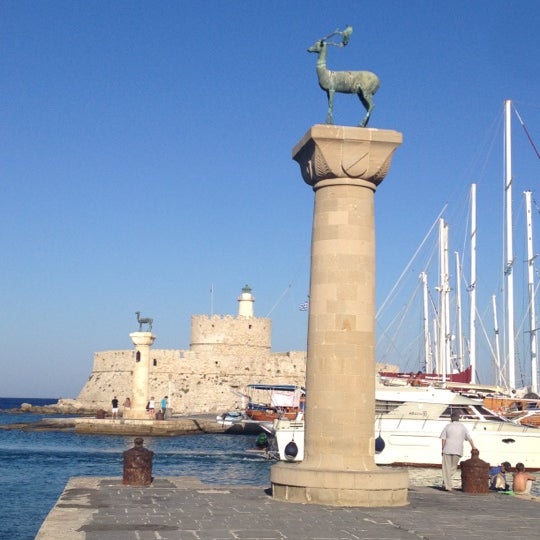

Archaeologists have also discovered foundries near the temple which may indicate the pieces were created there to minimise the distance they had to be transported. It is now thought that the statue stood close to the Temple of Helios, which archaeological excavations have located east of the city's acropolis. This has, however, been dismissed as impractical as the feet would have been about 400m apart and it more likely that the statue was of an upright figure for stability, and the arms would not have been outstretched. According to popular tradition the Colossus stood at the entrance to Rhodes' harbour, and stood with legs apart, one either side of the harbour entrance ( see illustration). Because the form the statue is unknown, it has been the subject of much speculation. According to Pliny the Elder (one of the three more useful sources) the statue cost 300 talents to build. In assessing the information compiled on the Colossus, archaeologist Reynold Higgins remarked that while 16 writers in Antiquity mentioned the statue only three give much detail. Little is known about the statue, and not even its precise location has been determined, and even how it looked is uncertain. However, the remains of the statue became a tourist attraction in their own right. Though the inhabitants of Rhodes wished to see the statue rebuilt this never came to fruition. It was about 33m high and collapsed during an earthquake in 226 B.C., just 56 years after it was finished. Chares of Lindos designed and built the bronze statue, which took 12 years to build. In celebration of the end of the siege, a statue of the sun god, Helois, was built. The siege of the city was lifted the following year when the citizens came to an agreement to support Demetrios. Demetrios Poliorketes began the siege of Rhodes. The Colossus of Rhodes was a statue of the Greek god Helios and considered one of the Seven Wonders of the Ancient World. Little is known about the appearance of the statue, however the pose of legs apart has been dismissed as impractical. Le Surrealisme c'est moi!, Kunsthalle, Wien, 2011, p.A speculative 18th-century depiction of the Colossus of Rhodes.
The colossus of rhodes portable#
The Portable Dalí, Universe, New York, 2003, p.Les Essentiels de l'art Dalí, Ludion, Amsterdam, 2003, p.Keller au Musée des beaux-arts de Berne, Kunstmuseum Bern, Bern, 1998, p. Keller an das Kunstmuseum Bern = De Matisse à Dalí : le legs Georges F. Von Matisse bis Dalí : Das Legat Georges F.Marco Di Capua, Dalí, Librairie Gründ, Paris, 1994, p.Robert Descharnes, Gilles Néret, Salvador Dalí, 1904 -1989, Benedikt Taschen, Köln, 1994, p.Eric Shanes, Dalí, Debate, Madrid, 1991, p.Salvador Dalí, Musée des Beaux-Arts, Montréal, 1990, p."Fine works featured in auction scheduled at Capital Fine Art", Los Angeles Times,, Los Angeles, n.Robert Descharnes, Dalí : la obra y el hombre, Tusquets, Edita, Barcelona, Lausanne, 1984, p.400 obras de Salvador Dalí de 1914 a 1983, Obra Cultural de la Caixa de Pensions,, 1983, p.



 0 kommentar(er)
0 kommentar(er)
